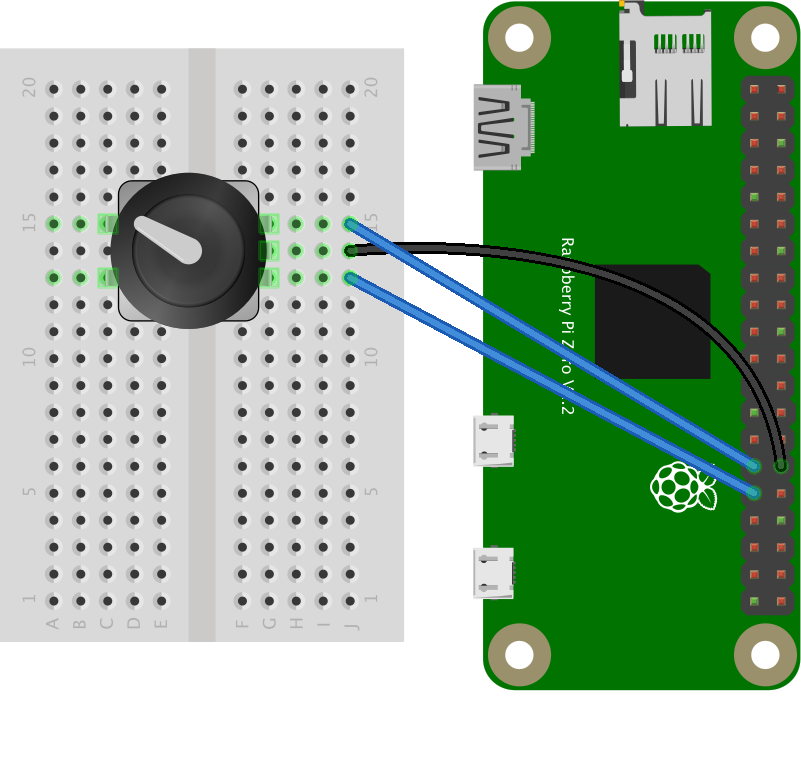PiRecipes
A collection of ways to do things on a Raspberry Pi
Rotary Encoder Input using GPIO
This library does not work with versions of node.js later than 11. Instead, see the GPIO components examples.
This example shows how to read a rotary encoder attached to two digital inputs. It uses the node.js onoff-rotary library. This example was tested on a Raspberry Pi Zero.
The Code
The code can be found in this repository.
The Circuit
The center terminal of a rotary encoder is attached to the Pi Zero’s ground pin (fifteenth pin down from the SD card holder on the right). The two outer terminals of the encoder are attached to GPIO pins 5 and 6 (pins 15 and 16 down from the SD card on the right). The circuit is shown in Figure 1 below.
This configuration works for the pushbutton because pins 5 and 6 are configured with a pullup resistor on the Pi by default. To see the default states of the GPIO pins, see Table 6-31 on pages 102 and 103 of the BCM2835 ARM Peripherals datasheet. The onoff library documentation has more detail on pullups and pulldowns.

Figure 1. Rotary encoder connected to Raspberry Pi’s GPIO pins. The encoder connects to GPIO 5 and 6 and ground.
Installing the Library
Type the following on the command line of your Pi to install the library:
$ npm install onoff-rotary
Alternatively, if you clone this repository, you’ll get the whole directory, and can install mcp-spi-adc using the package.json file like so:
$ npm install
Running the Script
Once you have the library installed, you’re ready to go. See the index.js file in this repo for detailed notes. Note that you will have to run this script using sudo on the Pi. So, to test the script, type:
$ sudo node index.js
And you should get some encoder readings: 1 for one direction, and -1 for the other, depending on how you wired the pins.